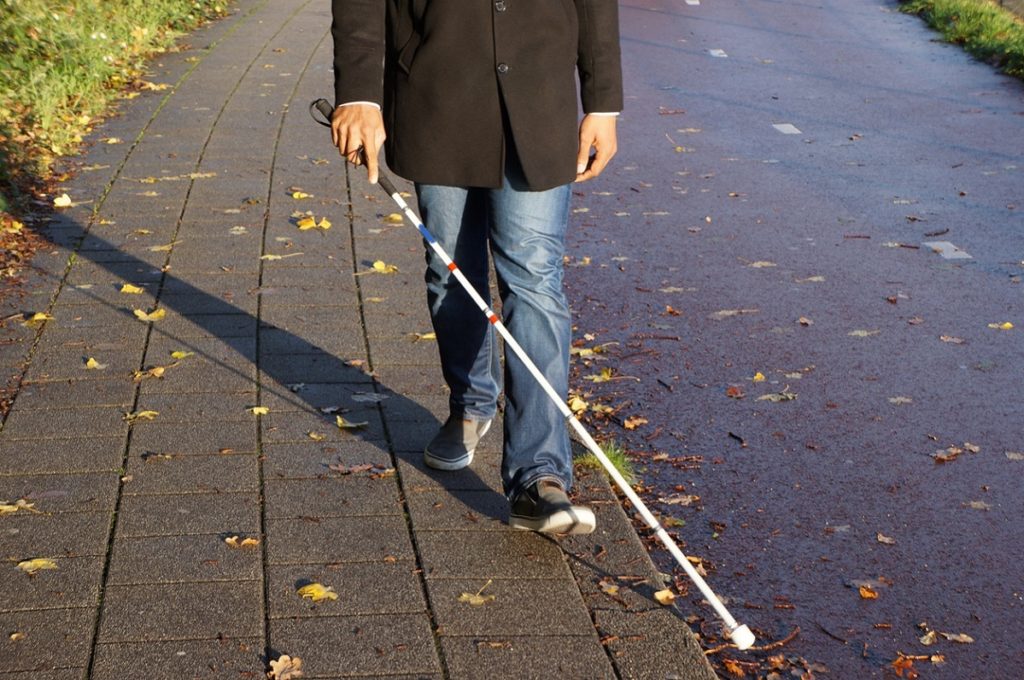“People were looking at me in an accusatory way. “Why are you out? You should be shielding.” Yet, I still don’t fit into the vulnerable group where I can get a spot to have my groceries delivered.”
This is just one disabled person’s experience of living through the pandemic. It highlights a multitude of issues disabled people have faced; longstanding discriminatory attitudes coupled with a whole new set of barriers introduced during the pandemic.
Earlier in the pandemic, as lockdowns began and supermarkets prioritised the ‘clinically extremely vulnerable’ for delivery slots and exclusive shopping hours, access to food was compromised for many disabled people who didn’t fit into this narrow category. One of these groups were blind people, who were often refused online slots even though they found it impossible to navigate shopping in person without getting too close to other shoppers and breaching distancing rules. In many instances, it seemed that the legal requirement to make reasonable adjustments was replaced by a medical definition of ‘vulnerable’ which excluded many people.
Disabled people have campaigned for years for a legislative framework to remove disabling barriers and promote greater equality. We have moved away from the days of defining disability purely by a medical diagnosis. We have come to understand that people are disabled at least as much by the barriers around them. Once supermarkets started to respond to disabled people’s concerns, and the Equality and Human Rights Commission published guidance reminding retailers of their legal duties, more people could shop and so became a little less ‘disabled’.


This story illustrates how, by categorising people as ‘vulnerable’ purely from a pre-defined list of conditions which heighten the risk of covid, the pandemic risked eroding years of progress. It replaced disability as an equality issue with a narrow medical definition.
Last week, almost a year after the pandemic began, the government announced an expansion of the criteria defining those who are ‘clinically extremely vulnerable’, informed by an algorithm considering factors such as BMI, level of deprivation and ethnicity. Thousands more people have been put on the shielding list, and many have had their COVID-19 vaccination moved forwards. This is indeed a welcome turn of events; however, this comes late in the course of the pandemic, many disabled people have been shielding without support until now. And this is likely to continue for many not identified by the new algorithm.
The category of ‘underlying health conditions’ has been used prominently during the pandemic, including in press briefings and analysis, in preference to ‘disability’. Of course, there is a case for identifying those health conditions that place people at higher clinical risk from covid and targeting support and vaccinations. But this categorisation has pushed other major disability-related risk factors into the shadows.
Disabled people may need multiple home visits from a number of different care workers, thereby increasing risk of infection; may live in more crowded settings, including care homes and other institutions, and – for those in work – are more likely to be in lower paid, front line (higher risk) jobs. Yet Health Foundation analysis found disabled people were less likely than non-disabled people to say health care for their ongoing conditions continued as normal; it was more likely to be cancelled. And studies by Shakespeare et al., the Greater Manchester Big Disability Survey and others show major impacts on people’s lives from reduced social care support during the pandemic.
The Office for National Statistics recently published shocking findings that confirmed almost 6 in 10 covid deaths have been among disabled people. Simply attributing these deaths to those with ‘underlying health conditions’ ignores the wider inequalities putting disabled people at higher risk. Some people with learning disabilities, for example, should now be more likely to be considered as clinically extremely vulnerable, but not all. Yet Public Health England’s data suggests they are still 4-6 times more likely to die from covid than the general population.
Whether or not we have underlying conditions that place us at increased risk of covid, disabled people have access requirements which lockdowns and other measures have too often taken away. Many have become ‘more disabled’, even if their impairments have been unaffected. Support with shielding is only one part of the story; our recovery from covid needs to go much further to reduce inequalities that intensified during the pandemic relating to access to employment, education, social care and healthcare.
To build back fairer after this pandemic, it is essential that we understand the deep-rooted inequalities that are putting disabled people at increased risk – not just the medical diagnoses. Disabled people’s leadership and involvement is essential to find the solutions, both in the immediate and longer term, which is why the Health Foundation recently brought together disabled people, academics and policy experts to explore a range of perspectives to inform its COVID-19 impact inquiry. The inquiry, which examines the impact of the pandemic on health and health inequalities in the UK, will report its findings in the summer.
Pandemic or not, covid has shone a much-needed light on the underlying inequalities disabled people encounter each day. Looking to the future, we must focus not only on reducing clinical risk, but on solutions that simultaneously tackle the major inequalities linked to socio-economic status, age, ethnicity – and disability. Only then can we achieve greater equality for disabled people and ensure we create a fairer, more resilient society for all.












